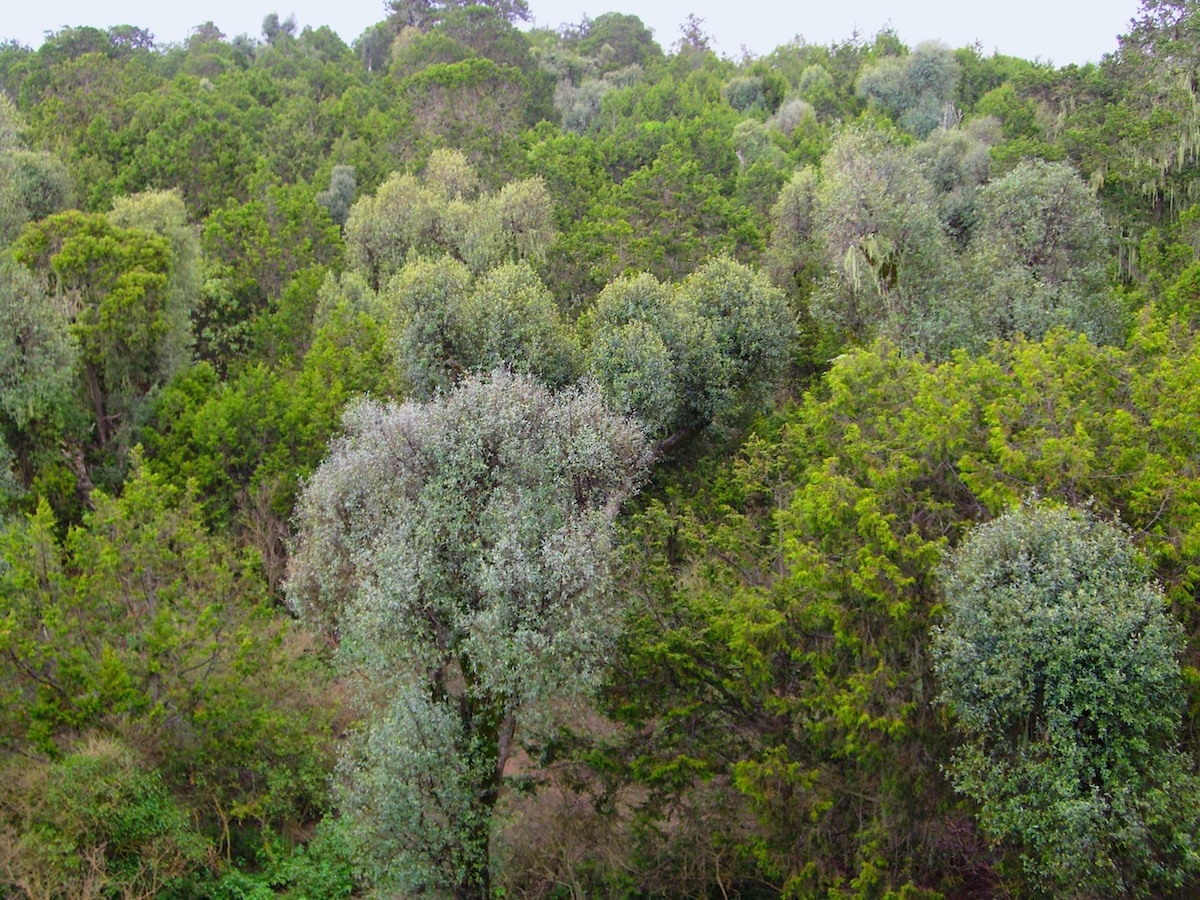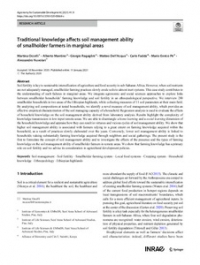Originally published in World Agroforestry.
Researchers around the world have found an alarming lack of natural replacement of dominant tree species after droughts.
Forests are experiencing growing risks of drought-induced deaths in a heating world yet the dynamics of these ecosystems following drought deaths remain largely unknown. This is a major limitation to understanding the ecological consequences of the climate crisis and the impact on humanity.
A team of researchers from across the globe have studied these issues and provide an emerging picture of post-drought ecological trajectories based on field indicators of forest dynamics.
Writing in the journal, Proceedings of the National Academy of Sciences, in November 2020, the team found, alarmingly, that replacement patterns following deaths indicate limited short-term persistence of pre-drought dominant tree species.
'This highlights the potential for major ecosystem reorganization in coming decades,' warned Ermias Aynekulu, a co-author of the study and land health scientist with World Agroforestry (ICRAF). 'The great variability of responses within, and among, species reinforces the major influence of drought and the legacies of the ecosystem --- affected by land use, management and past disturbances --- on continuing drought-related turnover of species and their potential implications for future forest biodiversity and ecosystem services.'
Climate-induced forest mortality is an emerging global phenomenon with major consequences for the functioning of these critical ecosystems. Reported increases in tree mortality point toward accelerating global vulnerability of forests under hotter temperatures and longer, more intense droughts associated with increased climatic variability.
'At ICRAF, we have been researching this and related phenomena for some time,' said Aynekulu, 'and found that abrupt drought-induced tree mortality can trigger substantial changes in the composition and structure of ecosystems that affected the climate-change mitigation potential of a dry Afromontane forest in northern Ethiopia and ecosystem resilience to subsequent disturbances.

Drought-induced mortality and the dynamics of plant communities following drought are expected to increase and will have major ecological and societal impact. The team found that tree mortality concomitant with drought led to short-term (mean 5 years, range 1 to 23 years after mortality) conversion of vegetation types, in 131 sites in biomes across the world. Self-replacement of the dominant tree species was only prevalent in 21% of cases. Further, forests and woodlands shifted to non-woody vegetation in 10% of them.
Following tree mortality concomitant with drought, persistence of dominant forest and woodland species was limited across the researchers' sites.
Replacement by other woody species (trees and shrubs) was the dominant process in 69% of the sites. Of those, shrubs were the main replacing species in 42% of the cases (29% of total cases) following mortality, pointing to important post-drought alterations of ecosystem structure and function. Further, in the 10% of the sites where there was no replacement by woody vegetation indicated at least a transient loss of forest and woodland cover promoted by drought-related mortality up to approximately 20 years following drought.
Such replacement patterns are consistent regardless of recovery time and forest successional state. Ecologists increasingly recognize that long-term outcomes of ecological succession can be disproportionately shaped by early patterns of species occupancy and ecosystem legacies, particularly under directional climate change. Drought represents, therefore, a likely driving factor of species turnover and structural change with strong influences on ecosystem resistance and short-term resilience.
Whether such changes correspond to transient communities within successional trajectories or to stable-state shifts will only be known through long-term monitoring. This is a key future research direction with implications for identifying suitable restoration options, including identifying the right tree species for a changing environment.
Read the journal article
Batllori E, Lloret F, Aakala T, Anderegg WRL, Aynekulu E, Bendixsen DP, Bentouati A, Bigler C, Burk CJ, Camarero JJ, Colangelo M, Coop JD, Fensham R, Floyd ML, Galiano L, Ganey JL, Gonzalez P, Jacobsen AL, Kane JM, Kitzberger T, Linares JC, Marchetti SB, Matusick G, Michaelian M, Navarro-Cerrillo RM, Pratt RB, Redmond MD, Rigling A, Ripullone F, Sangüesa-Barreda G, Sasal Y, Saura-Mas S, Suarez ML, Veblen TT, Vilà-Cabrera A, Vincke C, Zeeman B. 2020. Forest and woodland replacement patterns following drought-related mortality. Proceedings of the National Academy of Sciences Nov 2020:202002314. DOI: 10.1073/pnas.2002314117.
This study was funded by the CGIAR Research Program on Water, Land and Ecosystems (WLE), supported by the CGIAR Trust Fund.
---
Thrive blog is a space for independent thought and aims to stimulate discussion among sustainable agriculture researchers and the public. Blogs are facilitated by the CGIAR Research Program on Water, Land and Ecosystems (WLE) but reflect the opinions and information of the authors only and not necessarily those of WLE and its donors or partners.
WLE and partners are supported by CGIAR Trust Fund Contributors, including: ACIAR, DGIS, FCDO, SDC, Sida and others.











